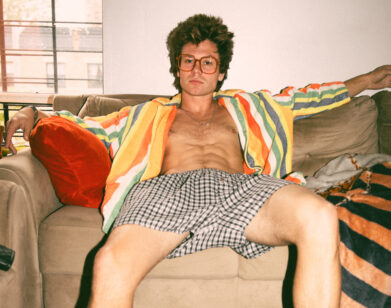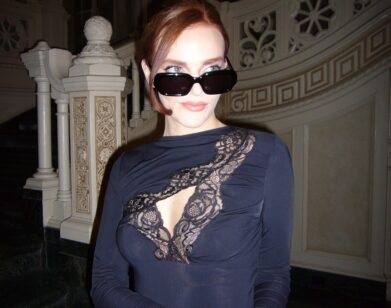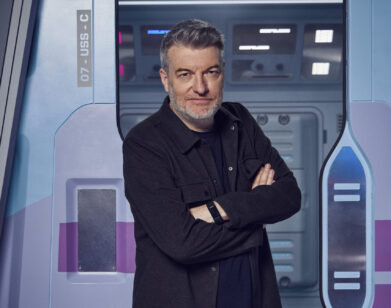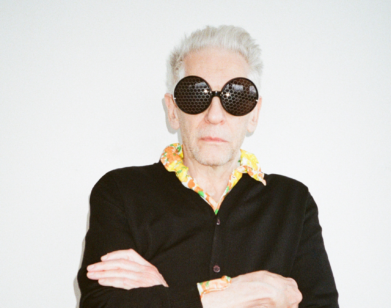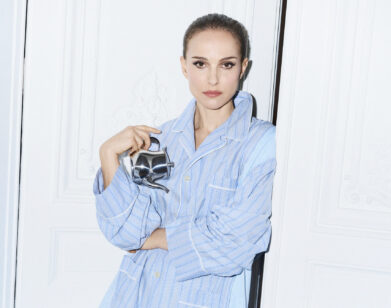How Sebastián Silva Found Compassion
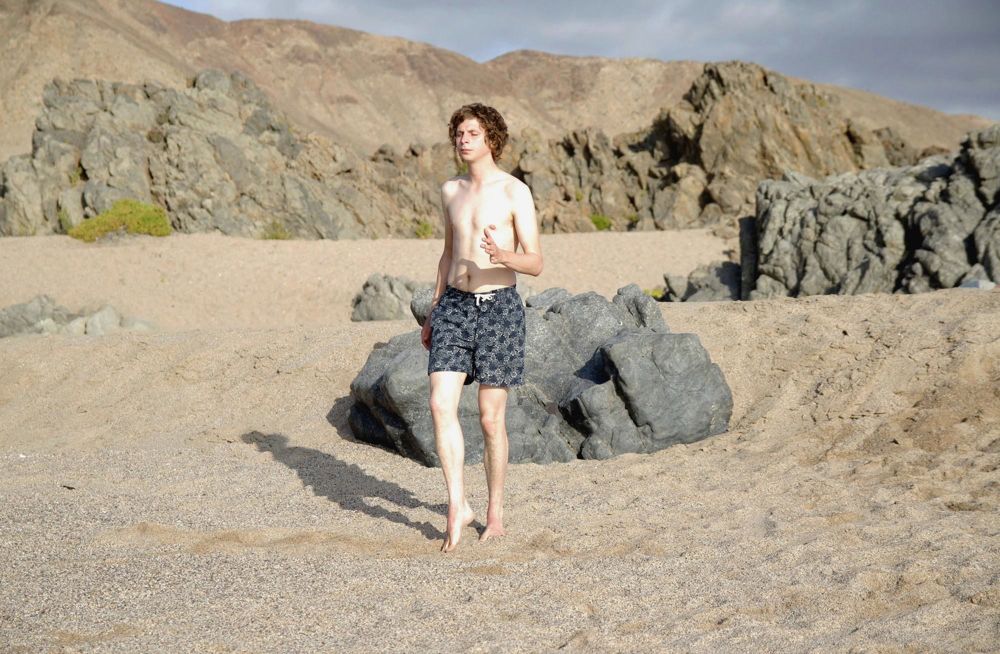
ABOVE: MICHAEL CERA IN CRYSTAL FAIRY
What does a director do while waiting for studio funding for his first major American movie to arrive? If that director is Sebastián Silva, he makes an autobiographical, improvised movie starring two of the actors that are slated to work with him on the studio feature. The result of Silva’s spur-of-the moment decision is the wonderful road-trip movie Crystal Fairy, which captures the stereotype of the ugly American so note-perfectly that it might occasionally be necessary to watch while covering your eyes. The film follows Jamie (Michael Cera) as he road-trips through Chile in hopes of consuming mescaline with his friend Champa (director Sebastián Silva’s younger brother Juan Andres Silva), two of Champa’s brothers [Silva’s other brother’s Jose Miguel and Augustin Silva], and a hippie—the titular Crystal Fairy (Gaby Hoffman)—in tow. We talked with Silva about improvising a movie, the birth of compassion, and Michael Cera’s mid-career renaissance.
MICHAEL HAFFORD: When did you decide to make Crystal Fairy? Was it a project you had in mind, or was it just sort of a spur-of-the-moment thing?
SEBASTIÁN SILVA: To make the movie was something that I decided right on the spot. I had this idea in a folder on my computer desktop for a really long time. Nothing written, just an empty folder with the name “Crystal Fairy.” It’s something that actually happened to me 12 or 13 years ago in Santiago. Me and my best buddy were going to go take San Pedro in the desert. I went to the Wailers concert and I was smoking weed with friends, and then I ran into this semi-artsy girl from San Francisco that went by the name Crystal Fairy. We became kind of friends in the concert. We smoked together. I told her the plan I had to go with my best friend to do mescaline, trying this cactus. She found it fascinating. I invited her to tag along with us. It was exactly like the movie. I told my buddy and he was like, “Dude, I don’t know if I could travel with Crystal Fairy. She’s sweet and everything but she’s kind of crazy.” And I said, “Yeah, it’s okay. We don’t need to bring her.” We took off without her and then she was there. We adopted her and… The fictional part of it is the confrontational aspects between Jamie and Crystal. Jamie is kind of my alter ego, I guess. I found it really amusing all these artifacts that Crystal Fairy was carrying with her and all the new age wisdom she had to offer us. It was fun. It’s really based on a true story.
HAFFORD: Is Jamie based on you other than the facts of the journey? Does he act like you acted?
SILVA: I’m not really that big of a jerk. I remember being really driven on the trip with getting the cactus. That was really a huge thing. I feel like I can sometimes be like that. If something is in my mind, I can easily forget everything else and maybe forget about other people. I’m trying to change [laughs] it’s not that I’m that bad. I want people to want to work with me. I’m not a jerk like Jamie, but I was pretty obsessed with the cactus. One thing that, yes, did happen to me on that journey that I thought was worth making a movie about was the first time—it was so weird to me—that I was feeling compassionate with somebody. Just the birth of compassion in a young adult, I think, is kind of a major thing in somebody’s life to feel compassion for someone. When Jamie’s crying for Crystal Fairy’s pain, that’s really what the movie is aiming for. That’s when Jamie actually grows. Spiritually or emotionally he becomes a nicer young man when he’s able to cry for somebody else’s pain. That happened to me and my friend, when we heard Crystal Fairy’s story and we knew where she was coming from. That was important.
HAFFORD: There are two moments like that: that and when Crystal Fairy says that her name is Isabelle to the guy that’s giving her a ride. That really humanizes the characters and you realize, “Oh that’s why we’ve been sticking with them.”
SILVA: Exactly. I also like the moment when Crystal Fairy—it’s kind a turning point, but it’s subtle—when she’s trying to bring that rabbit back to life. It’s her last absurd attempt to be someone that she will never be. At that moment she’s really trying to hold on to this fantasy, but she’s bringing it to such an absurd place. She knows the rabbit is never going to come back to life. She just wanted to try that to see how absurd everything she’s doing is. The fact that the rabbit doesn’t come back to life, it proves that she’s fooling herself. Right after that is when she decides to change the writing [in seashells on the side of a hill] from “Crystal Fairy” to “Crystal Hairy,” because she’s abandoning the fairy.
HAFFORD: Yeah. That makes a lot of sense, actually.
SILVA: She abandons the fairy, and Jamie becomes compassionate.
HAFFORD: Do you feel like Michael Cera is having a mid-career, dark rebirth as a villainous actor?
SILVA: Michael reached out to me two years ago after watching The Maid, and I met him at his hotel. I hadn’t seen any of his movies, I hadn’t seen Arrested Development. I didn’t know who he was. I didn’t know his name, and then I looked it up and I was like, “Oh yeah this kid, this actor from Canada.” I knew what he’d done, but I didn’t know who he was, so I had no knowledge of his career, his type. When I met him, we clicked immediately. He’s a very funny, witty, smart kid. And I told him, “Just collaborate with me on this HBO series [The Boring Life of Jacqueline] that I’m making.” I invited him to collaborate on that. I had known him for half an hour and I was just like, “Let’s do something.” He helped on the story and he had one day of work, and it was so much fun, and then I invited him to do Magic Magic. Everybody, when we do press, asks him about that. I think he’s been sort of typecast as a shy, quirky, indie, semi-cool dude, and he’s so good doing that. As soon as someone plays something that works, they just want them to do that thing over and over again. They do it with actors, they do it with directors, they expect you to just repeat your formula. They don’t see the potential. If you are so good at being a quirky, indie, weird, shy guy, why wouldn’t he be great at doing something else, too? I didn’t come in thinking I was going to change Michael’s type, because I never even knew that he had a type. Michael isn’t the jerk that he plays in Crystal Fairy or the jerk he plays in Magic Magic, but he has a really sharp sense of humor and anyone with a smart, sharp sense of humor has an evil side. Not in a bad way, but has a dark side. He’s able to laugh at himself, and he’s able to laugh at tragedy. That, for me, is what makes him so complete as a professional and as an actor. It’s so much more fun. If Michael was a toy, I would rather play with the evil toy, not with the nice, soft toy. It’s such a great actor to play evil. Not evil, but… He’s not evil in the movie, he’s just damaged. You almost come to sympathize with the character in the end. It’s very similar in Magic Magic. You say, “He’s an asshole, he’s an asshole, he’s an asshole,” then you’re like, “Dude, he’s closeted. Poor kid.” He’s living in such turmoil, this poor kid. You weep for him, that he’s coming from somewhere. He’s not just a creep.
CRYSTAL FAIRY OPENS IN LIMITED RELEASE TOMORROW, JULY 12.

